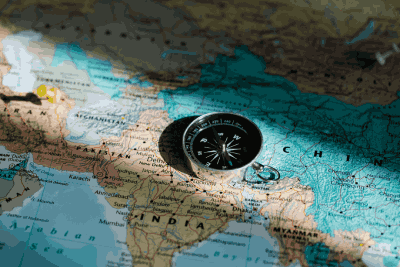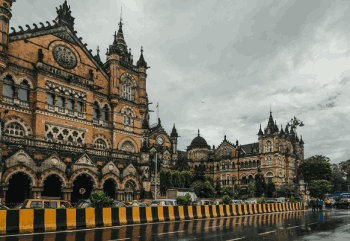India’s small and medium enterprises (SMEs) are showing strong signs of recovery and growth in 2025, after years of uncertainty due to the COVID-19 pandemic, inflation, and global disruptions. Supported by digital transformation, government schemes, and rising consumer preference for local products, Indian small businesses are bouncing back with confidence.
This article explores how Indian SMEs are regaining momentum, the challenges they still face, and the top trends shaping their journey.
Digital India Boosts Small Business Growth
The Indian government’s push for Digital India, along with affordable smartphones and widespread internet access, has created a strong digital foundation for small businesses.
In 2025, over 80% of Indian SMEs have an online presence, according to a survey by the Confederation of Indian Industry (CII). Whether it’s through WhatsApp Business, Google Business Profile, or e-commerce platforms like Amazon, Flipkart, and Meesho, small retailers are reaching more customers than ever.
Take the example of Rekha Saree House in Surat. What started as a local shop now receives orders from across India through their Instagram page and Shopify store. “We used to rely on walk-ins. Now, our biggest orders come from cities we’ve never visited,” says Rekha, the owner.
UPI, Fintech and Digital Payments Fuel Faster Sales
India’s digital payments revolution, driven by UPI (Unified Payments Interface), is transforming how small businesses operate.
In 2025:
- UPI transactions exceed ₹20 lakh crore monthly
- QR codes are now accepted even by roadside vendors and home-based businesses
- Fintech apps like PhonePe, Paytm, Razorpay, and CRED offer not just payments, but also short-term credit, insurance, and accounting tools
Small business owners no longer wait for monthly settlements. Real-time payments mean improved cash flow, which is essential for inventory and employee salaries.
Vocal for Local: Rising Consumer Support for Indian Brands
Since the launch of the Atmanirbhar Bharat (Self-Reliant India) initiative, there’s been a visible shift in Indian consumer behavior. People are choosing locally made products, supporting artisans, and trusting homegrown brands.
Khadi, handmade toys, organic spices, handloom fabrics, and eco-friendly products are seeing more demand—especially among urban millennials and Gen Z.
Platforms like ONDC (Open Network for Digital Commerce) are making it easier for small sellers to list products and compete with large e-commerce giants.
Ramesh Jha, who runs a bamboo craft business in Assam, now sells on three e-commerce platforms and ships across India. “Earlier we only sold at exhibitions. Now we sell daily from our workshop,” he shares.
AI, WhatsApp, and Tools That Make a Difference
You don’t need to be a tech expert to use technology in 2025. Indian small businesses are embracing simple digital tools to manage operations:
- Google Sheets for stock and sales
- WhatsApp Business for customer orders and updates
- Canva for creating offers and posters
- AI chatbots (via tools like Interakt or Gupshup) to answer FAQs
- Zoho Books and Vyapar App for easy billing and GST reports
These tools are affordable, available in regional languages, and easy to use—even for those with basic digital skills.
Government Schemes Empowering Entrepreneurs
Several government schemes are helping Indian small businesses with access to loans, marketing support, and digital skills:
PM Mudra Yojana
Provides collateral-free loans up to ₹10 lakh for small entrepreneurs.
Startup India and Stand-Up India
Encourages innovation and SC/ST and women entrepreneurs with loans and mentoring.
MSME Sampark and CHAMPIONS Portal
Offers guidance, skill development, and support for finding buyers.
Credit Guarantee Scheme
Backs loans for small businesses through NBFCs and banks.
These initiatives, combined with state-level grants, are empowering micro-entrepreneurs to start and scale operations.
Rural Businesses and Women Entrepreneurs Shine
Thanks to internet access and mobile-first tools, more rural and women entrepreneurs are building successful businesses in 2025.
- Homemade food delivery, organic farming, artisanal crafts, and reskilling centers are popular in Tier 2 and Tier 3 cities.
- Startups like Mahila Money and Haqdarshak help women get financial and legal support.
- YouTube and Instagram have created digital influencers from small towns, promoting products through reels and short videos.
Sunita from Jaipur, who started a boutique with ₹25,000, now sells stitched suits on YouTube and WhatsApp and employs two tailors.
Challenges That Still Remain
Despite all the progress, Indian small businesses still face issues:
Credit Access
Bank loans are often delayed or require heavy paperwork. NBFCs and digital lenders help, but not all entrepreneurs have credit history.Logistics and Returns
Shipping costs, especially for remote locations, are still high. E-commerce returns eat into profits.
Cybersecurity and Scams
Digital frauds are rising. Many small businesses are unaware of how to protect their WhatsApp, UPI, or website accounts.
Talent and Training
Finding skilled staff or getting trained in new technologies (like AI or cloud tools) remains a barrier for many.
Future of Small Business in India: 2025 and Beyond
Experts believe the next 3 years will see a golden period for Indian small businesses—if they embrace:
- Digital payments
- AI and automation tools
- Direct-to-consumer (D2C) models
- Skill development and digital literacy
India’s economy is projected to grow at 6.8% in 2025, with MSMEs contributing over 30% to the GDP. With the youth population, smartphone penetration, and supportive policies, India is uniquely placed to build a strong, local-first economy.
Conclusion: A New Era for Indian Entrepreneurs
From local kirana shops going digital to handicraft sellers using AI-powered ads, India’s small businesses are writing a new story—one of confidence, creativity, and community support.
If given the right ecosystem, they will not just survive, but lead the future of India’s economic growth.
So the next time you buy something—whether a handmade Rakhi, homemade achar, or eco-friendly Diwali décor—remember, you’re supporting a dream, a family, and India’s journey to becoming truly self-reliant.









Nicely written article.